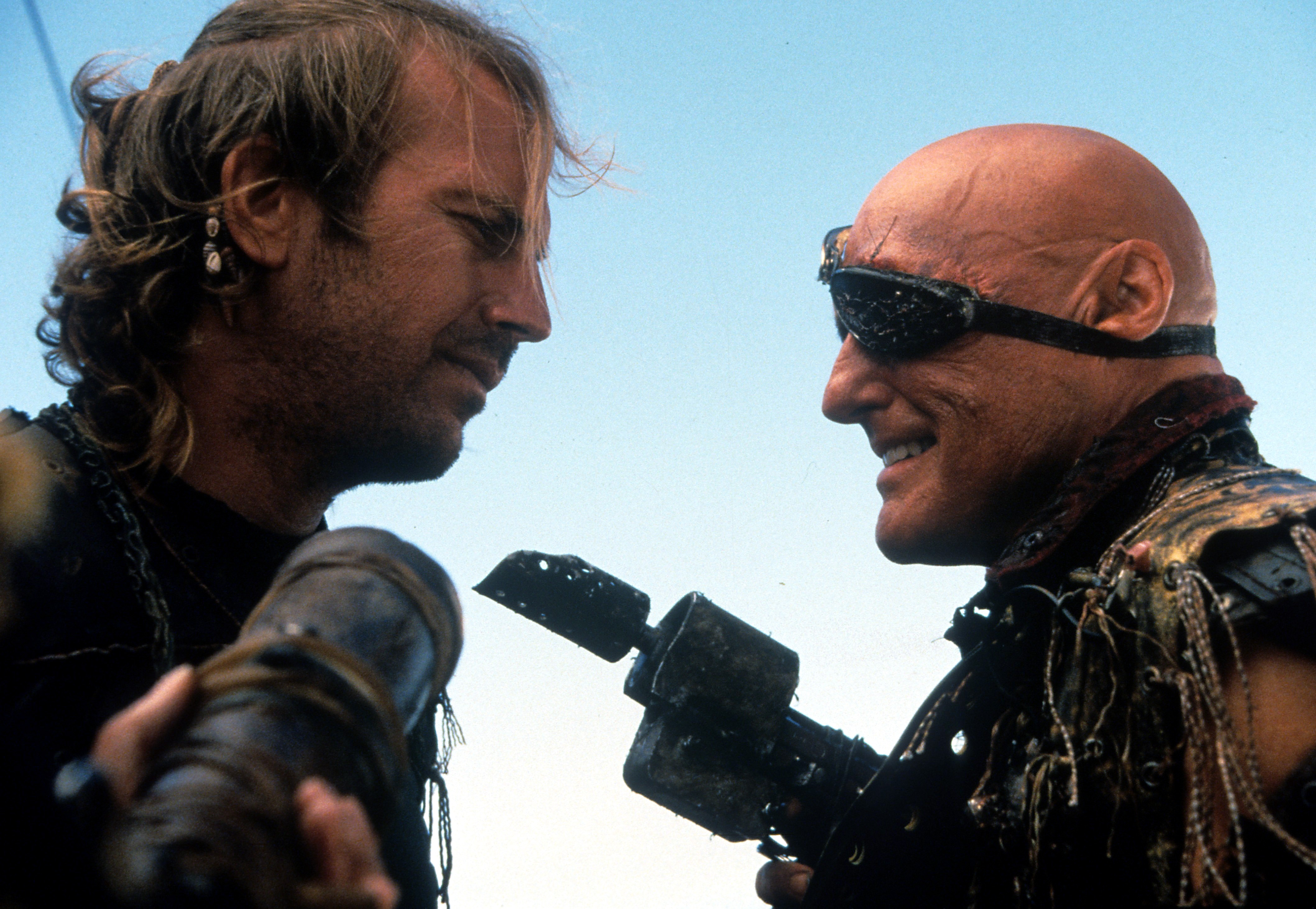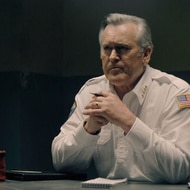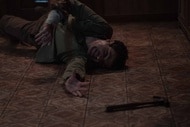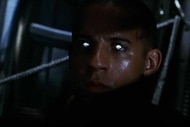How Waterworld Started as a Roger Corman Mad Max Knockoff & Became a $175 Million Blockbuster
Waterworld is streaming now on Peacock if you want to dive in.

With a sinking budget due to production costs and delays, the 1995 post-apocalyptic sci-fi film Waterworld became the most expensive movies ever made at the time of its release. But we almost got a much weirder version, made on a shoestring budget, without Kevin Costner — all from the studio of legendary small-budget sci-fi auteur Roger Corman.
With Waterworld streaming now on Peacock, we take a look back at how the project started as something very different than the epic would-be-blockbuster that would eventually make it to screen.
Waterworld was directed by Kevin Reynolds and starred Kevin Costner (who also took a key role in the film’s final form), developed from a 1986 script originally written by screenwriter Peter Rader. Set hundreds of years in the future, the film is basically an epic poem set in a world where global warming has covered the Earth in water and turned the idea of land into a myth. Costner played the film’s hero, the mysterious Mariner, who saves a young girl who holds the secret to finding the last vestige of dry land left on the globe.
The water-based shoot proved wildly expensive in itself, and a handful of weather-related shutdowns drove the $100 million budget (already high for a mid-'90s film) to around $175 million. The delays also pushed the scheduled 96 day shoot well into triple digits, finally wrapping at day 166. The film became notorious even before its release due to the production troubles and delays, and a global box office haul of $264 million couldn’t make back the budget and extensive marketing spend to break even (though it’s worth noting that upon home release in subsequent years, Deadline reports Waterworld did eventually turn a profit).
In an archived 1995 interview with Starlog magazine, original screenwriter Rader opened up about his original script and vision for the film, and how it dramatically changed when Reynolds and Costner came on board, overhauled the project and cranked the budget up to blockbuster levels. Rader reportedly wrote the script on spec with Roger Corman’s production company (Corman was famed for B-movie sci-fi, including the now-legendary 1994 Fantastic Four film), which pitched him on making a low-budget Mad Max-style knockoff film. But Rader was more interested in a watery post-apocalypse as opposed to a super-dry one.
“I started thinking about other visions of the future, and I guess I was thinking about planets whose moons were all water. I thought, ‘What about a future where the entire planet is flooded?’ I said, ‘Hey [producer] Brad [Krevoy], how about we do the whole movie on water?’ He said, ‘Are you out of your mind?! A movie like that would cost us $5 million to make!’ I ended up writing it on my own, because I really fell in love with the idea. And it ended up as Waterworld.”
Rader said he viewed the project as “kind of a western,” mixed with a “classic, mythic story.” He didn’t write it with any particular actor in mind for the title role, but admitted it would make sense the film would need a movie star to fit the bill. In peak mid-1990s form, Costner more than checked the box at the time. Before it had star power, though, early attempts to get the project off the ground sought to cut the film’s climactic ending — a set piece Rader said was integral to the tale of Waterworld from the very beginning (and would eventually be a key moment in the final film).
“The super-tanker in the movie was always the great set piece of the film. The final battle is over this gigantic super-tanker, and the super-tanker was always in all of the drafts, and was the culmination of everything,” he told Starlog. “At one point, they were saying, ‘We gotta find a way of making this cheaper — can you get rid of the super-tanker?’ It was the centerpiece of the movie! You need something huge like that when you’ve got people floating on rafts through the whole movie — you’ve gotta deliver something really spectacular.”
But with Costner and Reynolds’ eventual involvement also came a desire to retool the film to widen the scope and turn it into a full-fledged tentpole summer movie. That meant a lot of the quirky and weird stuff Rader had in his original spec was jettisoned.
“In my original draft, there were a lot of capricious and cartoonish elements. For instance, my pirate leader actually called himself Neptune, and he had a trident and sat in a clamshell throne,” Rader explained. “There were all sorts of very odd, funny touches like that. There were also some very surreal elements.”
Some of those surreal items included the Mariner originally having a horse on his boat that he kept mostly hidden. Birds would’ve also played a major role, as desirable animals able to detect potential land nearby.
“They decided it would be too much of a headache to have all those animals around,” Rader said. “They took out almost all of those lighter elements.”
In the end, the film became something truly unique, with an aesthetic, practical effects and full-size sets that still hold up to this day thanks to, well… all the money they spent making it. It’s also a testament to the sheer will to bring the film to life in the first place against all those odds, even if critics were mixed at the time, with some praising the summer movie tentpole spectacle vibe, and others lamenting Costner’s “dreary” leading man turn.
If you want to revisit the waterlogged epic, or finally check it out all these years later for yourself, Waterworld is streaming now on Peacock.
Originally published Apr 27, 2023.
























